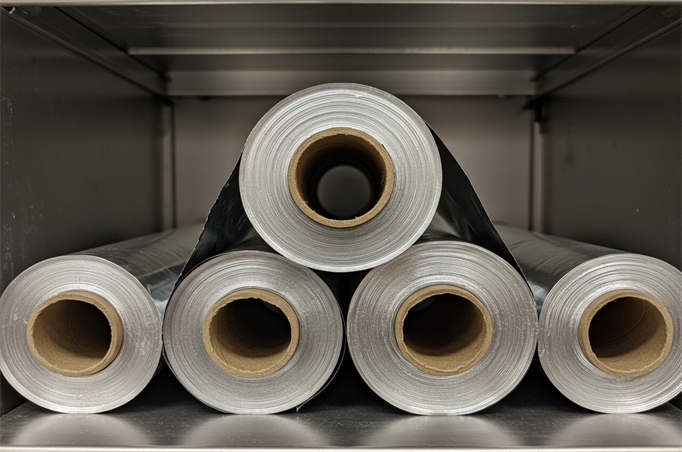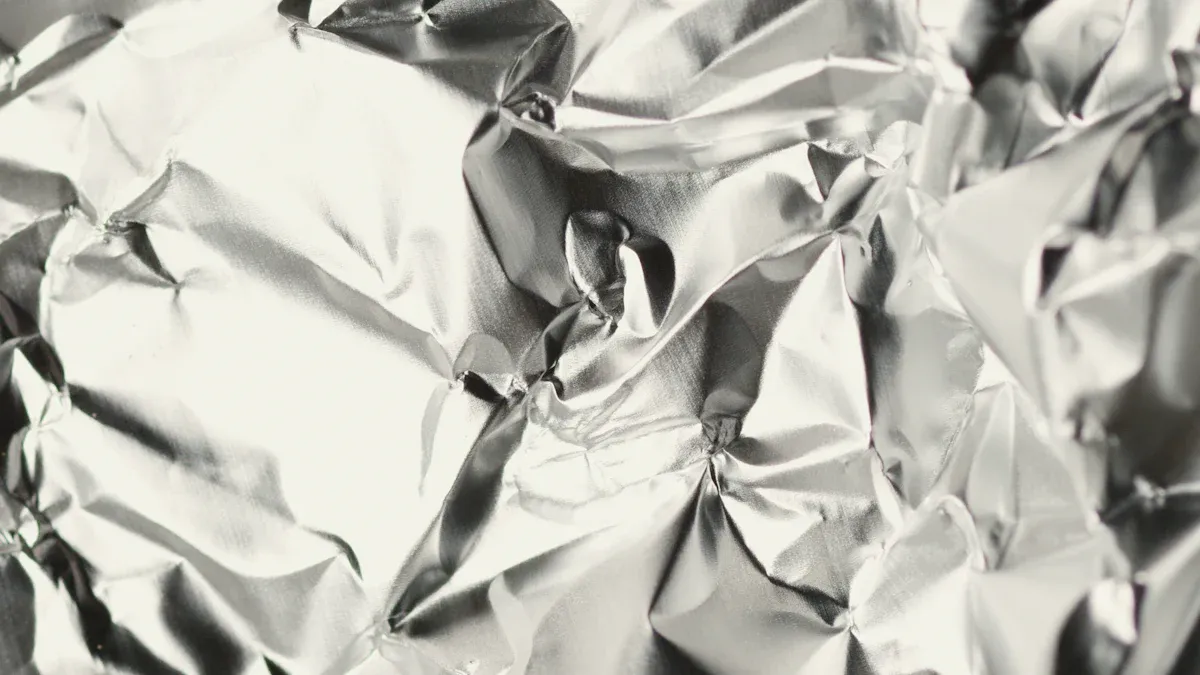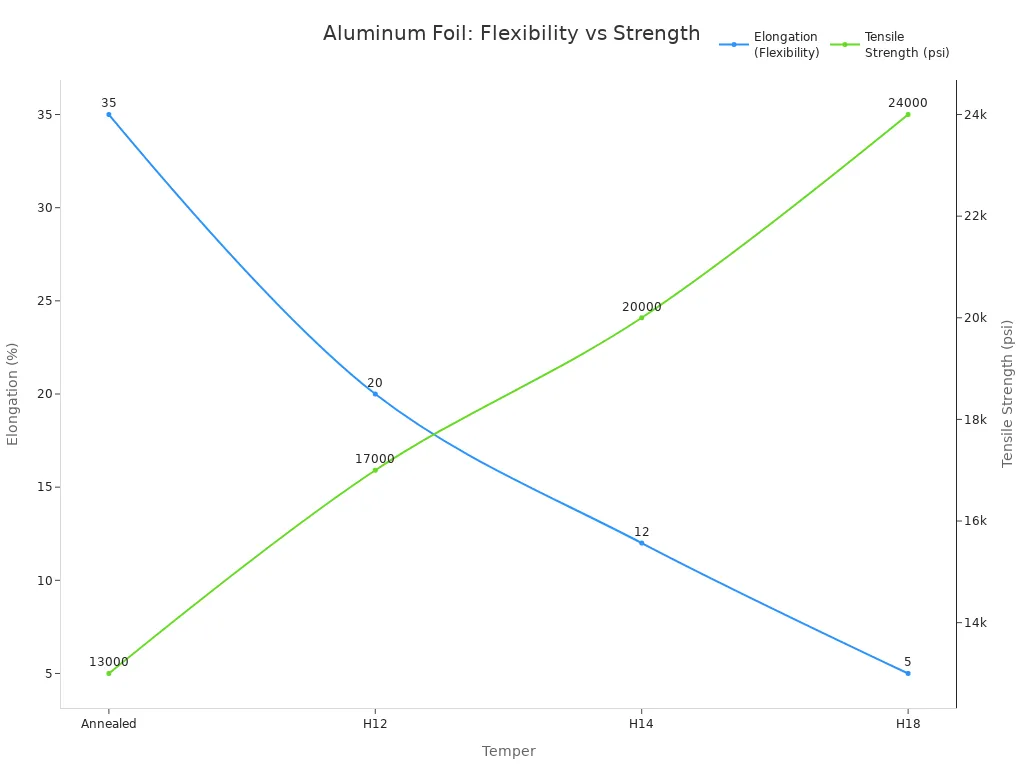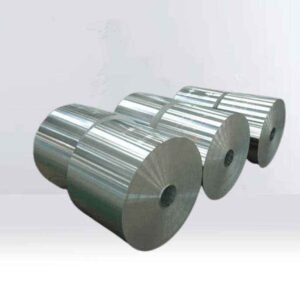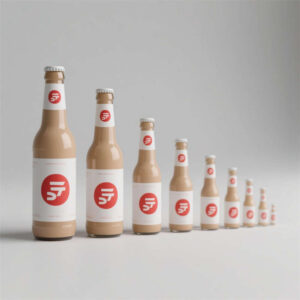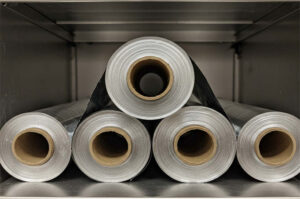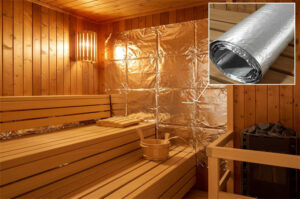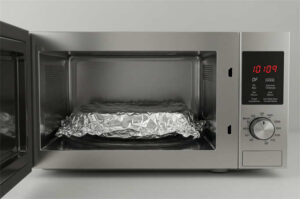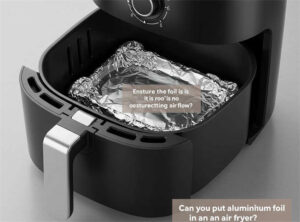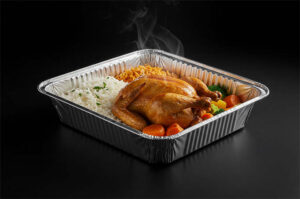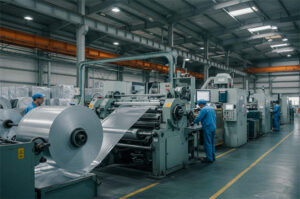Have you ever reached for rolls of aluminum foil just to cover leftovers or line a baking tray? You might think these shiny sheets only belong in the kitchen. Actually, you can use them in many parts of your home. Try looking at rolls of aluminum foil as a tool for cleaning, organizing, or even solving quick problems. You may discover new ways to make daily tasks easier.
Key Takeaways
- Aluminum foil has many types and thicknesses. Pick the right one for cooking, storage, or special jobs. This helps you get the best results.
- Use foil in the kitchen to cook food. It keeps food warm and stores leftovers safely. Do not wrap acidic or salty foods for a long time.
- Foil can help clean and organize your home. It removes rust and sharpens scissors. It also protects surfaces when you paint.
- You can use foil for crafts and art projects. Try quick fixes like fixing battery contacts. You can also use it to signal for help.
- Always use foil in a safe way. Do not put foil in microwaves. Recycle clean foil when you can. Try eco-friendly choices to help the environment.
Types and Sizes
When you go shopping for rolls of aluminum foil, you will see many choices. There are different types and sizes for different jobs. Some are for simple kitchen work. Others are for tough tasks or even science labs.
Standard Rolls
Most people use standard rolls of aluminum foil at home. These rolls are usually 12 inches wide. They come in lengths like 30 feet or 100 feet. You can buy them in packs of two or three. The foil is thin, about 10 microns thick. This makes it easy to wrap food or cover dishes. Here is a table that shows the usual size for homes:
| Attribute | Подробности |
|---|---|
| Width | 12 inches |
| Длина | 100 sq. feet |
| Упаковка | 2 or 3 pack |
| Описание | Standard household size |
Standard foil bends easily and is simple to use. It often comes in a strong box with a cutter. Many brands use boxes you can recycle. You can help the planet by recycling clean foil.
Heavy-Duty and Industrial
Heavy-duty and industrial aluminum foil is thicker and stronger than regular foil. Heavy-duty foil is 20 to 30 microns thick. Industrial foil can be more than 50 microns thick. Thicker foil is stronger and can take more heat. You can use heavy-duty foil for grilling or roasting. It is also good for wrapping big foods. Industrial foil is used for insulation and even in space projects.
Tip: Heavy-duty foil can take heat up to 600°F. Standard foil is best for normal cooking.
Specialty and Lab-Grade
Some aluminum foil is made for labs or special jobs. These foils have special features. Some resist chemicals or have extra strength. Lab-grade foil can seal containers tightly and keep out chemicals. Ultra High Vacuum (UHV) foil is very clean and used in cleanrooms.
| Specialty Type | Unique Properties | Приложения |
|---|---|---|
| Lab-Grade | Chemical/heat resistance, tight sealing | Science, research |
| UHV Foil | Contamination-free, high purity | Cleanrooms, vacuum chambers |
Aluminum foil is strong and bends well because it is very pure. Most foil has over 99% aluminum. It also has a little iron and silicon. This mix lets foil bend but keeps it strong.
You can buy these types of foil at stores, online, or from suppliers. Pick the right roll for your job. You will see how useful aluminum foil can be.
Kitchen Uses
Cooking Hacks
You can unlock many clever tricks in your kitchen with rolls of aluminum foil. Professional chefs often use foil to make cooking easier and cleaner. Try lining your baking pans with slightly wrinkled foil. This creates a non-stick surface, so you can remove food without scraping or breaking it. If you want to keep food warm before serving, wrap it in foil. The foil traps heat and moisture, so your meal stays fresh.
Foil works well for roasting and baking. You can mold it into liners, pouches, or tents. These shapes help food cook evenly and keep juices inside. When you roast vegetables or fish in foil packets, you trap moisture and flavor. This method makes your food juicy and tasty. You can use foil in ovens and air fryers, but never in microwaves. Foil can spark and cause fires in microwaves.
Here is a table with expert advice for baking and roasting with foil:
| Aspect | Expert Advice / Explanation |
|---|---|
| Regular vs. Heavy-Duty Foil | Heavy-duty foil is thicker and better for wrapping and cooking; regular foil is best for covering food to keep warm. |
| Heat and Moisture Retention | Foil conducts heat and traps moisture, helping food cook evenly and stay juicy. |
| Use in Oven and Air Fryer | Safe to use in ovens and air fryers; keeps appliances clean. |
| Avoid High-Acid or High-Salt Foods | Foil reacts with acidic or salty foods, causing metallic taste and foil damage. |
| Shiny vs. Dull Side | No difference for regular foil; only nonstick foil has a preferred side. |
| Not Recommended Uses | Do not use foil as oven liner or for baking cookies; never use in microwaves. |
| Foil Forms for Baking | Mold foil into liners, pouches, tents, or wrappers for better cooking and cleanup. |
| Heavy-Duty Nonstick Foil | Good for acidic foods and preventing sticking. |
| Potential Issues | Foil can stick to food during long baking; wrapped baked potatoes may get soggy. |
| Aluminum Exposure | Some aluminum may leach into food; use caution with high heat and acidic foods. |
You can also use crumpled foil as a scrubber for stuck-on food on pots and pans. This trick works well, but avoid using it on nonstick surfaces. If your brown sugar gets hard, wrap it in foil and bake at a low temperature. The sugar softens and becomes easy to use again.
Tip: When cooking acidic foods like tomato sauce or citrus, use parchment paper inside the foil packet. This prevents the foil from reacting with the food and keeps flavors pure.
Food Storage
Rolls of aluminum foil help you store food safely and keep it fresh. Foil acts as a barrier against light, oxygen, and moisture. These elements cause food to spoil. When you wrap leftovers in foil, you block out air and light. This helps preserve flavor, nutrients, and texture.
You can use foil to wrap food before freezing. Foil prevents freezer burn by sealing out air and moisture. Scientific studies show that foil pans and bags freeze food evenly. This reduces moisture loss and keeps food from getting dry or icy. For best results, cover food tightly with foil and add a lid or zip-top bag for extra protection.
Here are some ways to use foil for food storage:
- Wrap sandwiches, cheese, or baked goods to keep them fresh.
- Cover bowls or plates to protect food in the fridge.
- Line containers with foil before storing leftovers.
- Wrap food in foil before freezing to prevent freezer burn.
- Combine foil with other sealing methods, like zip-top bags, for longer storage.
Aluminum foil containers are lightweight and space-saving. You can cook, store, and reheat food in the same container. Foil packaging is hygienic and safe for direct contact with food. It is also recyclable, so you help the environment when you use and recycle foil.
Note: Foil is not airtight. For long-term storage, use foil with other sealing methods to prevent flavor loss or freezer burn.
You can use rolls of aluminum foil in many ways to make cooking and food storage easier. Try these tips to keep your kitchen running smoothly and your food tasting great.
Household Uses
Cleaning
You can use rolls of aluminum foil for many cleaning tasks around your home. Foil works well for scrubbing, polishing, and even sharpening tools. If you want to remove rust from chrome, dip strips of foil in water and gently rub the rusted area. This method helps restore shine without scratching the surface. You can also clean silverware by lining a glass dish with foil, adding baking soda, salt, vinegar, and boiling water. Place your silverware in the dish so it touches the foil. After soaking, dry and buff each piece for a bright finish.
Foil helps sharpen dull scissors. Fold a strip of foil several times and cut through it with your scissors. This simple trick improves blade sharpness. You can also crumple foil into a ball and use it with dish soap to scrub pots, pans, grills, and oven racks. Foil removes baked-on food and grime quickly.
| Cleaning Task | Description & Method Summary |
|---|---|
| Remove Rust | Soften rust with soapy water, scrub with wet foil strips, dry and buff. |
| Clean Silverware | Line dish with foil, add baking soda, salt, vinegar, boiling water; soak silverware touching foil, then dry and buff. |
| Sharpen Scissors | Fold foil, cut through with scissors repeatedly, then clean blades. |
| Clean Grill | Heat grill, cool, spray vinegar, scrub grate with crumpled foil ball, rinse with hose. |
| Wash Pots & Grills | Crumple foil into a ball, use with dish soap to scrub pots, pans, grills, and ovens. |
Tip: Always test foil on a small area first to avoid scratching delicate surfaces.
Organization
You can use rolls of aluminum foil to organize and protect items in your home. If you need to iron delicate fabrics like silk or wool, place foil under the fabric. The foil reflects steam heat and helps smooth out wrinkles faster. When you paint a room, wrap doorknobs and hardware with foil. Foil molds to the shape and protects surfaces from paint drips.
Foil also helps keep small items together. Wrap batteries, screws, or jewelry in foil to prevent loss or damage. You can shape foil into trays or dividers for drawers. This keeps tools, craft supplies, or office items sorted and easy to find.
- Place foil under fabrics during ironing for smoother results.
- Wrap hardware with foil before painting to protect from drips.
- Crumple foil for quick cleaning of glass pans or oven racks.
- Use foil to bundle small items or create drawer dividers.
Rolls of aluminum foil offer simple solutions for cleaning and organizing many areas of your home. Try these ideas to make your chores easier and your space tidier.
Creative and Emergency
DIY Projects
You can turn aluminum foil into amazing art and craft projects. Try Aluminum Foil Embossing Art. Start by cutting cardboard to the size you want. Draw a design, then glue yarn on the lines to make raised patterns. Press heavy-duty foil over the design and smooth it out. Use permanent markers to color between the yarn lines. This creates a shiny, textured piece that looks like stained glass. You can display your art as a card or hang it on the wall.
Here are some fun projects you can try:
- Make a shiny whale or a jeweled turtle using foil and craft supplies.
- Create foil punch ornaments by punching patterns into foil for holiday decorations.
- Build a floating ball for a science experiment.
- Design a solar oven to cook simple foods using sunlight.
- Craft a recycled jet pack costume with foil and cardboard.
You can also use foil for sculpting. Combine foil with cardboard, wire, or foam to make miniature villages, figures, or even fairy houses. Heavy-duty foil works best for these projects because it holds its shape well.
Tip: Use markers, paint, or glue-on jewels to add color and sparkle to your foil creations.
Quick Fixes
Aluminum foil can help you in many emergency situations. You can shape foil into a small container to boil water if you need to purify it outdoors. Fold sheets to collect rainwater or make a funnel. If you need to signal for help, use foil as a mirror to reflect sunlight.
You can repair loose battery contacts by folding a small piece of foil and placing it between the battery and the contact. This restores the connection and gets your device working again. Wrap matches or small tools in foil to keep them dry. Attach foil to fishing hooks to attract fish with its shine.
Foil reflects about 95% of radiant heat. In an emergency, wrap foil around your body or sleeping bag to help keep warm. Double layers with air gaps work best for insulation. Foil also works as a windbreak or heat reflector near a campfire.
| Emergency Use | How It Helps |
|---|---|
| Boil Water | Makes a quick pot for purification |
| Signal for Rescue | Reflects sunlight as a mirror |
| Fix Battery Contacts | Restores electrical connection |
| Insulate Shelter | Reflects heat, keeps you warmer |
| Protect Tools | Keeps items dry and rust-free |
Note: Foil is helpful in emergencies, but it tears easily. Handle it with care for best results.
Safety and Environment
Советы по использованию
You can use aluminum foil safely if you follow some rules. Do not wrap acidic or salty foods in foil for a long time. Foods like tomatoes or pickles can make the foil break down. This can let aluminum get into your food. When you freeze food, use only foil pans that are not damaged. Cover them tightly to keep air out and stop freezer burn. Let your food cool before freezing it. This helps stop ice crystals from forming.
Never put aluminum foil in a microwave. It can spark and cause a fire.
Here are some tips for using foil safely:
- Do not use foil with acidic foods like tomato sauce or citrus.
- Do not wrap food in foil for a long time, especially if it is salty or acidic.
- Keep foil away from flames and do not use it as an oven liner.
- Write the date and what is inside on frozen food to keep it fresh.
- Leave space in containers for food to grow when freezing.
Studies show that cooking with foil at high heat or with acidic foods can add more aluminum to your food. Most people get rid of small amounts of aluminum easily. But too much over time can be bad for your health. To stay safe, use parchment paper or glass containers for baking. Do not cook with foil at very high heat.
Recycling
Making aluminum foil uses a lot of energy and makes pollution. Getting new aluminum from the ground also hurts nature. Recycling foil saves energy and cuts down on pollution. Always clean foil before you recycle it. Dirty foil cannot be recycled and may go to a landfill.
Tip: Wash off food bits before putting foil in the recycling bin.
Recycling works better in cities than in the country. Cities have the right machines to recycle foil. Rural areas may not have these machines. If your area does not recycle foil, try to use it again or pick green choices.
Here are some other things you can use instead of foil:
- Beeswax wraps for storing food
- Silicone lids and baking mats
- Glass containers with lids
- Reusable aluminum foil made from recycled material
- Parchment paper that is unbleached and compostable
Picking these options helps the earth and keeps your kitchen eco-friendly.
You now know that rolls of aluminum foil do more than just cover food. They block air and light, so food stays fresh longer. Aluminum foil also reflects heat and helps save energy at home. You can use it for cleaning jobs or to organize things around the house. It is great for art projects and crafts too. Some people use foil to sharpen scissors or protect plants in the garden.
- Keep food fresh and make it last longer
- Make cooking and cleaning up easier
- Help the planet by recycling and reusing foil
Try using aluminum foil in new ways at home. Share your best ideas with others. Simple things like aluminum foil can help you every day and save you time.
Часто задаваемые вопросы
Can you put aluminum foil in the oven?
Yes, you can use aluminum foil in the oven. You should avoid letting foil touch the oven walls or heating elements. Always use foil to cover food or line baking pans, not as an oven liner.
Is aluminum foil safe for food storage?
Aluminum foil is safe for most foods. You should avoid wrapping acidic or salty foods for long periods. Acidic foods can react with foil and change the taste. For best results, use foil with another container for long-term storage.
How do you recycle aluminum foil?
You can recycle aluminum foil if it is clean and free of food. Rinse off any residue before placing it in your recycling bin. Some recycling centers do not accept foil, so check local rules first.
What are some creative uses for aluminum foil?
You can use aluminum foil for crafts, science projects, and quick repairs. Try making art, sharpening scissors, or creating a solar oven. Foil also works well for protecting surfaces during painting or organizing small items.

